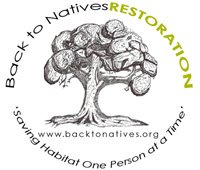
Thank you to the Orange County Community Foundation, REI, Ralphs & the Wells Fargo for funding our 2011-12 Service Learning habitat Restoration Volunteer Program!

Removing invasive Fountain Grass from Santiago Creek!

Volunteers removed ALL of the seed heads, and now they are going through and removing as many of the plants as possible.

Removing the invasive, non-native weeds allows space for the natives to grow. Native plants provide habitat for animals and a diverse ecosystem is more enjoyable for humans that visit the reserve!

Come join us! Upcoming volunteer dates are listed at http://www.backtonatives.org/volunteer.shtml - see you soon!


























+of+Plants+Try-it_3-29-09_3.JPG)


















